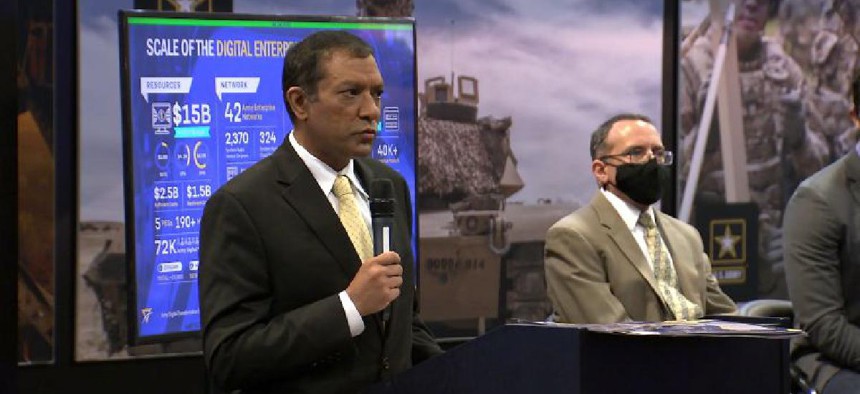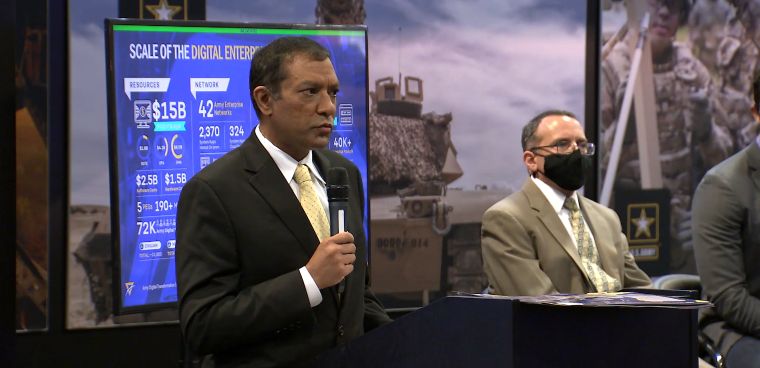Army CIO sets out to revamp IT policy

Army CIO Raj Iyer wants to overhaul IT policy so it doesn't stand in the way of the services' goal to become more technologically agile.

Raj Iyer presents at the Association of the U.S. Army annual conference on Oct. 13, 2021
Army CIO Raj Iyer wants to overhaul IT policy so it doesn't stand in the way of the services' goal of becoming more technologically agile.
"We know how to patch traditional IT systems. How do you patch sensors and operational technology, how do we collect the right analytics and data, and how do we share data with our joint service partners and industry. That is a policy problem," Iyer told reporters Oct. 13, during the Association of the U.S. Army's annual conference.
Iyer said the Army didn't have the right policies and procedures for some recent technologies, such as internet of things devices, or ways protect them on DOD's network.
"If everything we said we're going to do is already on the cloud and we know that there are legitimate cyber security threats that we're aware of, how do we share that information with the cybersecurity service providers...how do they share that information with us."
The Army CIO's comments come after it released its long-awaited digital transformation strategy in September. The strategy, which comes after the Army split the CIO role into two positions to separate IT from network communications and policy, outlines three main objectives with modernization at the top.
That means accelerating cloud adoption, improving cybersecurity, while syncing and updating IT infrastructure and business systems. Other objectives include reforming investments by creating audit readiness and "increasing IT investment accountability" with analytics and cultivating a digital workforce through education and a clear pipeline for talent to go after training.
"This digital transformation journey we're on, this is a clear priority for us in the Army. This is not one we're going to treat as an IT project right and that is a big differentiator, a big distinction we want to make," Iyer said.
The Army, like other military services, is pushing hard on data sharing with combatant commands and allied partners, which demands a secure network, broad cloud adoption and appropriate policies in place.
Maj. Gen. Matthew Easley, the Army's director for cybersecurity and chief information security officer, said the same goes for sharing software.
"If we develop a new piece of software, how can we get the Air Force…the British Army where they can trust and say yes [Maj. Gen.] Easley certified this and because I know what his processes were, I know he followed these procedures, and that level of trust can be brought across," Easley said.
Network plan
On Oct. 8, the Army released its Unified Network Plan led by Lt. Gen. John Morrison, the Army's deputy chief of staff, G-6. Iyer described the plan as a subset of the Army's digital transformation strategy that focuses on syncing and modernizing the Army's IT infrastructure from the tactical edge to the enterprise.
Iyer said the overall strategy and network plan aim to reset how the Army does business and push for reform that can answer questions, including what happens to the DODIN or the NIPRNET as it exists today as DOD uses more and more commercial technologies.
"There's all these adjustments that have to be made in terms of that unified network for us to achieve that full resiliency," the CIO said.



